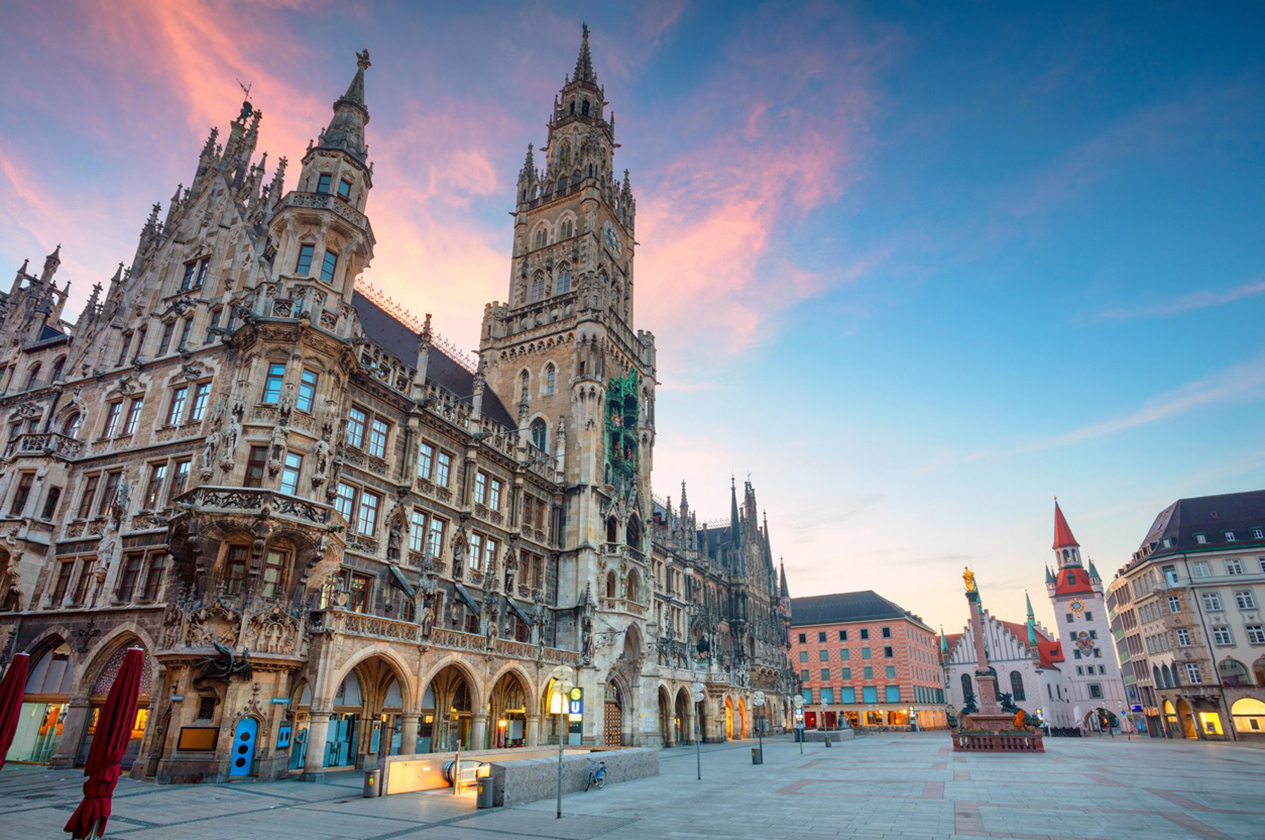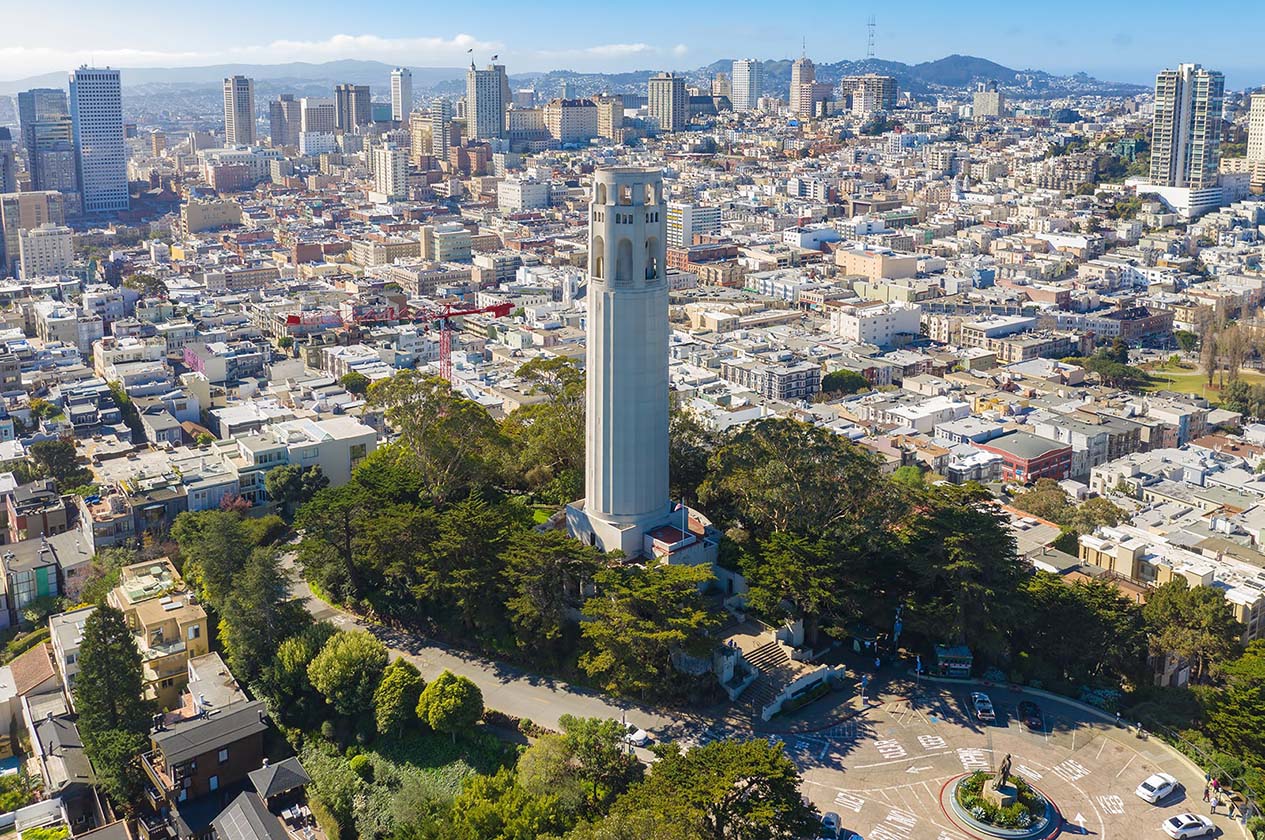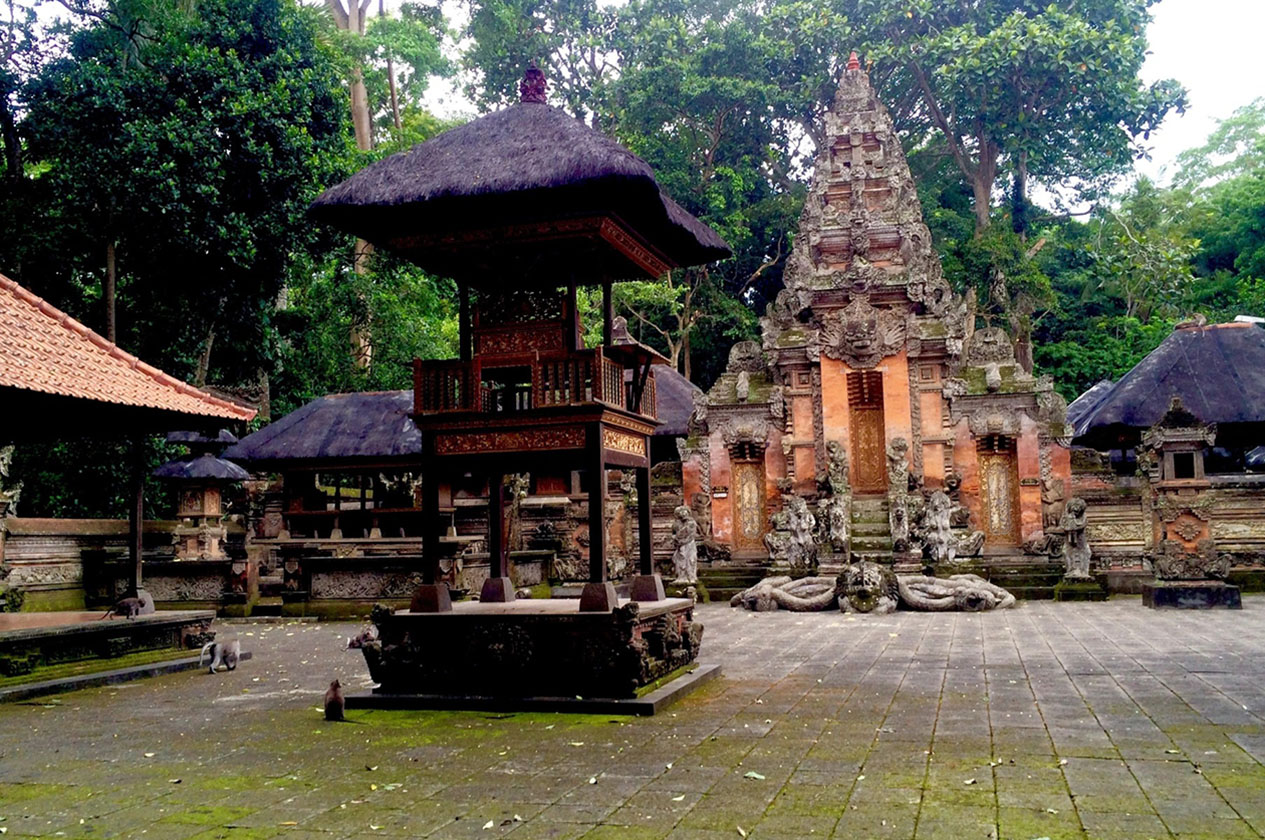Munich is one of the wealthiest cities in Germany and one of the cities with the highest quality of life in the world. Although many tourists only associate it with Oktoberfest, FC Bayern Munich, or major companies like BMW, Siemens, or Allianz, the truth is that the capital of Bavaria has numerous cultural and natural attractions.
Here we leave you with our own selection of places to visit in Munich, with a brief explanation of each and practical details to plan your trip.
Marienplatz
Marienplatz has been the heart of Munich since the city’s foundation in 1158. It is named after the Mariensäule (1638), a column dedicated to the Virgin Mary commemorating the end of the Swedish occupation after the Thirty Years’ War. This column remains one of the most prominent features of the square today, although almost all the attention goes to the impressive Neues Rathaus (New Town Hall).
The Neues Rathaus, in neo-Gothic style, was built in several stages (1867-1906). Its architect, Georg von Hauberrisser, drew inspiration from the Brussels Town Hall (15th century) for its design. In the tourist office, located on the ground floor, you can book various tours: the ascent to the tower (85 m), the ascent to the “Bayern Balcony,” or the guided tour. What shouldn’t be missed is the Glockenspiel show.
Every day at 11 am and 12 pm (and from March to October also at 5 pm), the majestic carillon of the Munich Cathedral is set in motion, with its 43 bells and dozens of figures that depict some historical moments, such as the wedding of Duke Wilhelm V of Bavaria or the traditional “Schäfflertanz” dance. Another of the main places to see in Munich is located on one side of the square: the Altes Rathaus.
Eclipsed in our days by the Neues Rathaus, the Old Town Hall served as the seat of local administration until 1874. Its origins date back to 1310, although in subsequent centuries it underwent significant remodeling that blended styles: late Gothic, Baroque, neo-Gothic, etc. Another noteworthy place is the Fischbrunnen (fish fountain), built after World War II to replace a historic previous fountain.
Munich Cathedral
The Frauenkirche is the Catholic cathedral of Munich. Although neither its interior nor its exterior are as beautiful as those of other Gothic cathedrals in the country, its two enormous towers ending in domes are one of the city’s great symbols. In fact, in 2004, the people of Munich voted that no other building could surpass them in height (99 m).
The Munich Cathedral was erected in just 20 years, completing its construction in 1488. The towers, however, remained unfinished, and in the midst of the Renaissance, it was decided to top them with domes instead of the projected spires. Inside, quite austere, stand out the mausoleum of Emperor Louis IV of Bavaria and the curious Teufelstritt.
The Teufelstritt, translated as “the devil’s footprint,” is a curious footprint found at the main entrance of the cathedral. Several legends surround this footprint, although the most popular says that it was a mark left by the devil when he entered to contemplate, enraged, that new temple created in the name of God. The footprint attracts so many curious onlookers that it is usually covered to ensure silence and respect.
St. Peter’s Church
St. Peter’s Church, also known as Alter Peter, is one of the must-see visits in Munich. Although its origins are older, the oldest parts of the current building date back to 1368. Over time, elements and decoration were added in Renaissance and Baroque styles, such as its fabulous high altar, with a gold statue of St. Peter (16th century).
Inside, you should not miss the ceiling frescoes (18th century), several Gothic paintings, and, especially, the gruesome relics of Saint Munditia, richly adorned with gold and precious gems. The remains of this martyr from the 3rd century arrived in Munich in the late 17th century and have been venerated in St. Peter’s Church ever since.
Last but not least, don’t miss the ascent to the tower. If climbing its 300 steps doesn’t represent a problem for you, it’s definitely worth paying the entrance fee to ascend to its excellent viewpoint, located at about 56 m in height. From there, you have an unbeatable panoramic view of the Marienplatz and the Munich Cathedral (first photo of the article).
Viktualienmarkt
One thing to do in Munich is to stroll through Viktualienmarkt. Established in 1807 by order of King Maximilian I of Bavaria, the city’s new market expanded until it reached its current size around 1890. Here, you can buy food, flowers, souvenirs, etc., and choose from numerous dining options on its spacious and lively terraces.
Walking through the market, you’ll come across several fountains and statues that honor some of the city’s famous figures, such as singers or comedians. As in almost all Bavarian towns, you’ll also find the Maypole, a kind of giant pole adorned with folk motifs from the city and the state.
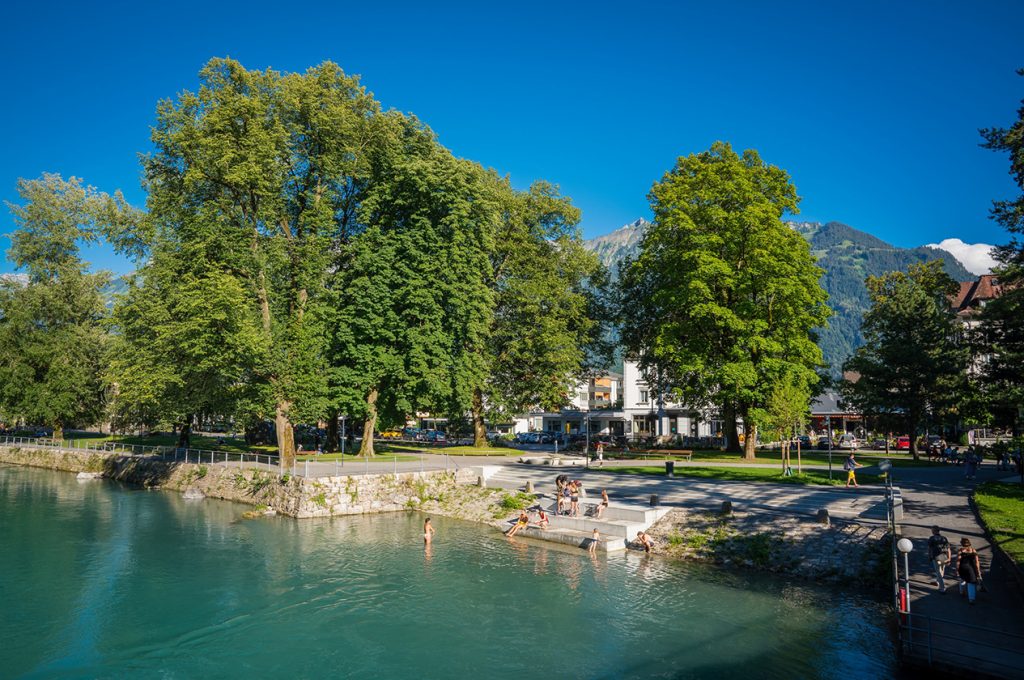
Englischer Garten
Munich’s English Garden is one of the largest urban parks in the world, surpassing the likes of Central Park or Hyde Park, for example. Its 375 hectares stretch parallel to the Isar River, and among its forests and meadows, several canals wind their way through. Although the park is huge, its main attractions are near the center, such as the famous Eisbachwelle, an artificial wave full of surfers.
In the Englischer Garten, founded by Elector Karl Theodor in 1789, other highlights include: the Japanese Tea House (1972), a charming Japanese tea house located on an island; the Monopteros, a round temple that imitates Greek tholos; and the Chinese Tower, with a lively beer garden around it. It’s a fantastic place for cycling, having a picnic, or taking a refreshing dip.
Nymphenburg Palace
Another must-see in Munich is Schloss Nymphenburg, with its fabulous gardens. Built between 1664 and 1675 to celebrate the birth of Elector Maximilian II of Bavaria, this enormous Baroque palace was one of the main summer residences of the Bavarian rulers. It still belongs to the House of Wittelsbach today, although it is open to the public.
Don’t miss the huge palace park (229 hectares), the second-largest park in Munich. The oldest part, in front of the palace, follows the style of French gardens (like Versailles), while the rest is in the English style. In addition to the large canal, which has gondolas in summer, you should visit its various pavilions, lakes, waterfalls, etc.
As for the palace, if you decide to go inside (highly recommended), you can visit about 20 historic spaces, starting with the Great Hall, with frescoes by Cuvilliés and Zimmermann. The rest of the rooms, some of them with period furniture and sumptuous decoration, are apartments belonging to the Bavarian electors. By the way, the famous King Ludwig II of Bavaria, known as the Swan King, Fairy Tale King, or Mad King, was born in one of them.
If you have plenty of time, in the surroundings of the palace, you can also visit the gigantic Munich Botanical Garden, several museums (such as the Carriage Museum or the Porcelain Museum), the charming Neuhausen district, or the Hirschgarten Park, where you’ll find the largest beer garden in the whole state of Bavaria.
Olympiapark
Olympiapark is another of Munich’s great parks (85 hectares). It was created for the Munich 1972 Olympic Games and is home to the Olympic Stadium and other sports facilities and installations related to the Olympics, still in use for sports events, concerts, etc. One of the park’s major attractions is the Olympiaturm, a 190-meter tower from where you can see the Alps.
The entrance fee isn’t cheap, but from its 360º observation deck, you’ll have magnificent views of the park, the city (though somewhat distant), and even the Allianz Arena, the Bayern Munich stadium. By the way, there are two levels: the one with the café, with glass windows, and another outdoors. In Olympiapark, you can also visit an aquarium, the memorial for the Munich massacre, and the BMW Welt, where several BMW cars and motorcycles are exhibited. If you’re a BMW enthusiast, on the other side of the highway is the BMW Museum.
Residenz
The Münchner Residenz was the palace of the kings and electors of Bavaria from 1508 to 1918. With 10 courtyards and 130 rooms divided into several buildings, it is the largest urban palace in Germany. The oldest parts of the complex are Renaissance, but later additions are Baroque, Rococo, and Neoclassical. Inside, the Antiquarium stands out, the oldest (1571) and longest (66m) hall in the palace.
Additionally, other spaces such as the Ancestral Gallery, the chapel, the Imperial Hall, the royal apartments, or the Throne Room are remarkable. The visit to the Residenz can be optionally completed with the Treasury and the Cuvilliés Theatre. The Treasury includes 1500 pieces (crowns, jewels, etc.) belonging to the Bavarian royalty. The Cuvilliés Theatre, on the other hand, is a small and beautiful Rococo theater from the late 18th century.
In the vicinity, there are other interesting places to see in Munich. To the east is the Odeonsplatz, with the Feldherrnhalle (created in 1984 imitating the Loggia della Signoria in Florence) and the Theatinerkirche, a Baroque church from the 17th century. To the north is the Hofgarten (royal garden), and to the south are the Nationaltheater (the state opera) and the Maximilianstrasse, one of Europe’s most luxurious streets.
Hofbräuhaus am Platzl
Hofbräuhaus is arguably the most famous beer hall in the world. Its foundation dates back to 1589 when Duke William V of Bavaria decided to establish a brewery for the Wittelsbach family, which until then imported beer from other regions. In 1607, the demand among nobles and servants was so high that Maximilian I ordered the construction of a second location in Platzl, where it has remained ever since.
Hofbräuhaus opened to the public in 1828 and quickly gained international fame. Although it was rebuilt after WWII, today you can enjoy a fabulous traditional and festive atmosphere, always accompanied by live music. Between the main hall and the outdoor beer garden, there is room for more than 1,000 people. Ideal for drinking beer, but also for enjoying Bavarian specialties.
Museums in Munich
If you are a fan of museums, you will have trouble choosing in Munich. Fortunately, most of them are concentrated in Kunstareal, the art district. In this area, about 600 x 600 meters in size, there are up to 18 museums and 20 galleries. Whatever you choose, we suggest starting the visit at the monumental Königsplatz, with several neoclassical buildings such as the Propylaea, the Glyptothek, and the Staatliche Antikensammlungen.
The three most famous museums in Kunstareal are the Alte Pinakothek, with paintings from medieval to rococo art; the Neue Pinakothek, with works mainly from the 19th century; and the Pinakothek der Moderne, with a collection of 20th-century art. If you are interested in the topic of Nazism, we suggest visiting the NS Dokumentationszentrum (free admission), which showcases the evolution of the movement in the city where it originated.
Beyond Kunstareal, there are also other popular museums, such as the MUCA (contemporary art), the Kunsthalle and the Haus der Kunst (temporary exhibitions), the Jüdische Museum (Jewish museum), the Munich Stadtmuseum (city history), or the beer and Oktoberfest museum. The most visited of all is the enormous Deutsches Museum, renovated in 2022. It is a museum of science and technology that can be especially interesting if you are visiting Munich with children.
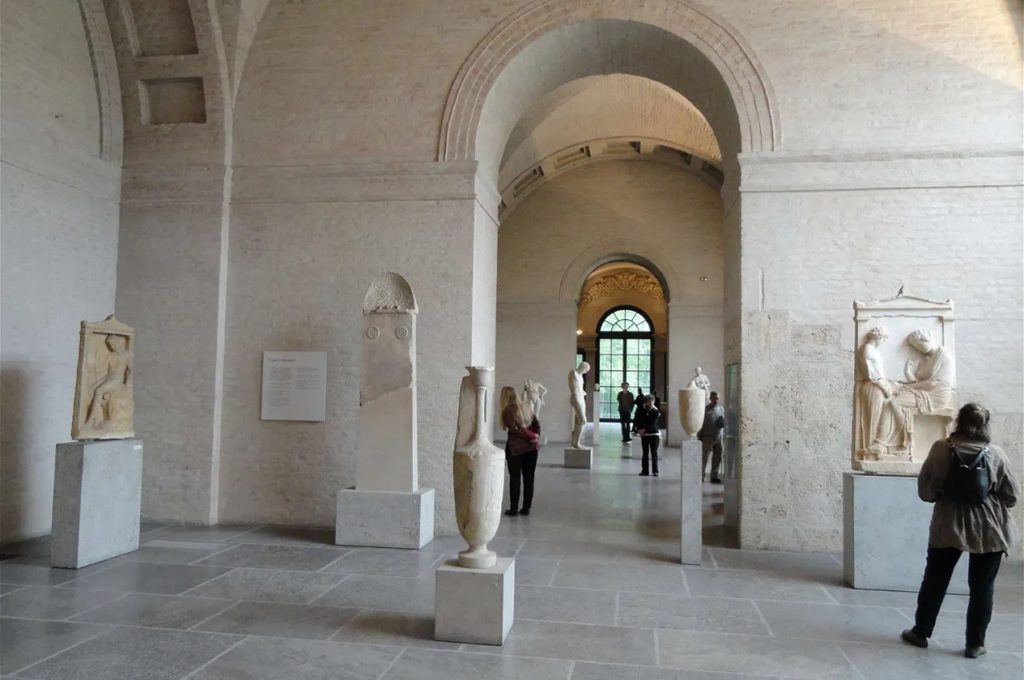
Asam Church
One of the most beautiful churches to see in Munich is the Asam Church, named after the Asam brothers, artists who built it for their private use. Completed in 1746, in late Bavarian Baroque style, it measures only 8 meters wide and 22 meters long. The interior, excessively decorated, is overwhelming. By the way, at the entrance, you have to look for the golden sculpture of death cutting the thread of life.
Munich Gates
Until the late 18th century, the city of Munich was completely surrounded by walls. Nowadays, the only survivors of the ancient fortifications are the three city gates: Sendlinger Tor, Isartor, and Karlstor, all from the 14th century (rebuilt after WWII). They are close to the center, and each has its own charm, so it’s worth taking a look.
To the north of the city, if you are passing by, you can see the Siegestor, which is not another of the city wall gates, but a triumphal arch from the 19th century, built by order of King Ludwig I to honor his army. A little further on is the curious figure “The Walking Man” (1995), 17 meters high, representing the values of the “Munich Re Foundation.” And that’s our list of things to do in Munich!
Exploring Munich is like delving into a captivating story where every corner reveals a piece of its rich history and vibrant culture. From the iconic landmarks like Marienplatz and the Nymphenburg Palace to hidden gems like the Asam Church and Munich Gates, the city offers a treasure trove of experiences waiting to be discovered. Whether you’re wandering through its charming streets, savoring a hearty Bavarian meal in a traditional beer hall, or immersing yourself in its world-class museums, Munich never fails to enchant and inspire. So, as you bid farewell to this captivating city, carry with you the memories of its beauty, warmth, and endless allure. Until we meet again, auf Wiedersehen, Munich!
